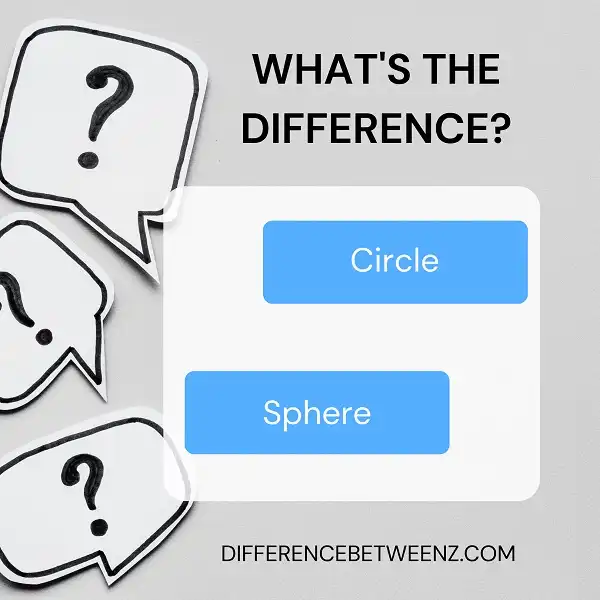Circle vs. Sphere
Difference between Circle and Sphere: – When we speak of geometric figures, common sense often leads us to make some mistakes and confuse one thing with the other; to the point of calling a thing by a name that does not correspond to it.
Below we will see two figures that are often confused quite frequently, but that actually have many differences. It is about the circle and the sphere. We will see what the differentiating characteristics are.
Difference between Circle and Sphere
Circle
The circle is a plane and round figure, whose limit (the circumference) is composed of points equidistant from a fixed point (the center).
The circle is a two-dimensional figure and a plane. It is a simple form of Euclidean geometry, in which a set of all points in a plane are at a fixed distance from a given fixed point; known as the center.
A circle is a simple closed curve that divides the plane into two regions: one inside and one outside.
Technically it is known as a disk. It is a curve that maintains a fixed distance, when it is drawn from the center point.
The study and development of this figure is responsible for one of the branches of mathematics, Geometry, although it is also used in other fields such as calculus and astronomy.
Some examples of circles in the real world are the wheels, the plates and the surface of a coin.
The terminology of a circle includes the following definitions:
- Center: is the equidistant point of the points on the circle.
- Radius: A segment of line connecting the center of the circle to any other point of the circle. It is the length of a segment of the circle, which is half the diameter.
- Diameter: is a line segment whose ends are in the circle and pass through the center of the circle. Join the two opposite points of a circle.
- Circumference: is the length of a circuit along a circle.
- Chord: is a segment of the line whose ends are in the circle.
- Tangent: is a straight line that touches the circle at a certain point.
- Arc: connected part of the circle.
A sphere is a solid, round figure. On its surface, each of its points is equidistant from its center.
Sphere
It is a three-dimensional figure, which has volume. It resembles a ball.
The distance (r) is the radius of the sphere and the midpoint is the center of the sphere.
The maximum distance passing directly through the sphere passes through its center and therefore is twice its radius; is the diameter.
Any plane that includes the center of a sphere divides it into two equal hemispheres.
Archimedes created formula for sphere.
The sphere is also defined as the surface formed by the rotation of a circle on any diameter.
Any cross-section through a sphere is a circle.
Just as in circles, in spheres all points are at a fixed distance from their center.
Examples of spheres in nature are bubbles, planets, and water droplets.
Basic properties of a sphere:
- All the points of a sphere are at the same distance from the fixed point.
- The contours and plane sections of the spheres are circles.
- Spheres have a constant width and circumference.
- The spheres do not have the center on the surface.
- The spheres have larger volume and the surface area is smaller.
- The spheres have a constant mean curvature.
Key differences between Circle and Sphere
- The circle is a figure with all points at the same distance from its center.
- The sphere is a solid figure, completely round; with each point of its surface at equal distance from its center.
- A circle is a two-dimensional figure, while a sphere is a three-dimensional figure.
- In a circle you can only calculate the area of your surface,
- while in a sphere you can calculate the area of the surface and also the volume.
- Examples of circles: bracelets and tires. Examples of sphere: tennis balls and planets.


